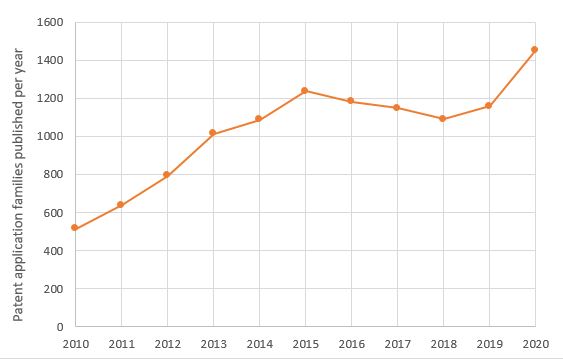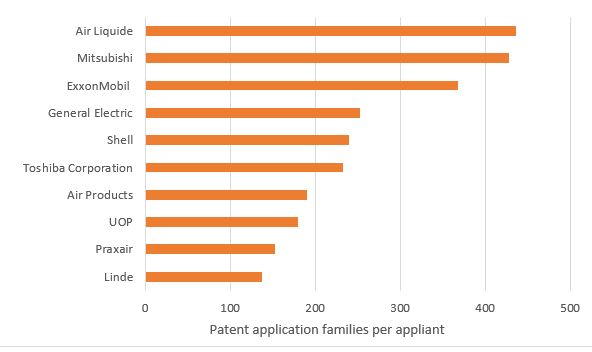03/11/2021
As the UK hosts the COP26 climate summit in Glasgow, the world is watching to see if global leaders can come to an agreement on how to tackle the issue of climate change.
In November 2020, the UK Government published their Ten Point Plan for a Green Industrial Revolution. Point 8 of the plan focuses on investing in carbon capture, usage and storage (CCUS). The Government has set out their target to capture and store 10 MtCO2 annually by 2030, which is equivalent to four million cars worth of emissions. In the plan, the UK Government has committed to investing up to £1 billion to support the establishment of CCUS across four industrial clusters.
In the past, support for carbon capture has been criticised for encouraging carbon emitters and prolonging our reliance on fossil fuels, rather than tackling the problem at source and preventing the production of CO2 altogether. While no CO2 emissions may be the ultimate goal, it is clear that we must do everything we can to drastically reduce our global emissions if we are to limit the global temperature increase to less than 1.5 degrees Celsius. So perhaps we should embrace every opportunity available to us to reduce the amount of CO2 in the atmosphere. Whether that be by displacing fossil fuels with cleaner alternatives, by capturing CO2 from industrial processes before it is emitted, or even more ambitiously capturing carbon dioxide directly from the air in the atmosphere.
Carbon Capture Technology
There are several types of carbon capture technology that may be utilised as we strive to reach net-zero. Carbon dioxide emitted from traditional power generation and industrial processes can be captured and prevented from entering the atmosphere at source. For example, capturing the CO2 flue gas from traditional steam-methane reforming to produce “blue” hydrogen could help us to transition to cleaner fuels.
There are three main carbon capture techniques used to remove CO2 from the emissions created by burning fossil fuels. They are:
- Post-combustion capture
- Pre-combustion capture
- Oxy-fuel combustion
Each method has its own benefits and no single solution will be the answer. For example, post-combustion capture can be retrofitted to existing plants, whereas pre-combustion capture is cheaper, but cannot be applied to older plants.
Carbon capture can also be used to “suck” in CO2 from the open atmosphere in a process known as Direct Air Capture (DAC). The estimated energy needed for DAC is higher than for conventional carbon capture units used for emissions at source. The cost of implementing DAC is also likely to be higher, but it is a good option for tackling the emissions from many diffuse emission sources.
After the CO2 is captured, instead of it being emitted back into the atmosphere, there is potential to use and commercialise the captured carbon, or it can be stored underground.
Carbon Capture Innovation
The European Patent Office “Y02” classifications scheme classifies patent applications that relate to climate change mitigation technologies. The graph in Figure 1 below shows the published patent application families over the last 10 years related to carbon capture technology, using the “Y02C20/40” CPC class for capture, storage, sequestration or disposal of CO2.

Figure 1: Patent application families published per year in CPC class Y02C20/40
In general, the number of patent applications related to carbon capture technology has been steadily increasing over the last 10 years. There were nearly three times as many published applications in 2020 compared to 2010, reflecting the growing interest in this field and the increased urgency to achieve net-zero.
CPC class Y02C20/40 also shows which applicants are filing these patent applications. The top ten filers over the last 10 years are shown in Figure 2 below.

Figure 2: Patent application families per applicant published between 2010 and 2020 in CPC class Y02C20/40
The top filers are large oil and gas players and industrial gases companies, who are adapting their business models and seeking to adopt less polluting alternatives to reduce their emissions from their heavily emitting industries.
However, there are plenty of new innovators in this sector who are developing new carbon capture solutions and protecting their inventions with patents.
For example, Carbon Clean have developed a modular system and proprietary solvent to capture CO2 from flue gas. The modular system can be easily tailored to the size of the emitting plant, and therefore reduce the costs of implementing carbon capture technology by up to 50%.
Carbon Engineering are a direct air capture focused company and have 10 pending patent and application families. Their DAC pilot plant, was designed and built as a proof of concept and testing facility. When operating, the pilot plant captures one ton of CO2 per day. Last month, they announced that engineering and design has begun on a large-scale commercial facility.
Another carbon capture company is Climeworks. From a search of the European patent database, Climeworks AG has 22 patent families with titles such as “Materials for the Direct Capture of Carbon Dioxide from Atmospheric Air”. To help fund their projects they have a subscription service where you can sign up to order CO2 removal from the air, or send it to someone as a gift!
Like many new technologies, the cost of capturing CO2 has been prohibitive for large-scale commercialisation. But with government commitments, private sector innovation and a global focus on tackling climate change, the COP26 summit could serve to accelerate the implementation of carbon capture technology.
This article is for general information only. Its content is not a statement of the law on any subject and does not constitute advice. Please contact Reddie & Grose LLP for advice before taking any action in reliance on it.


